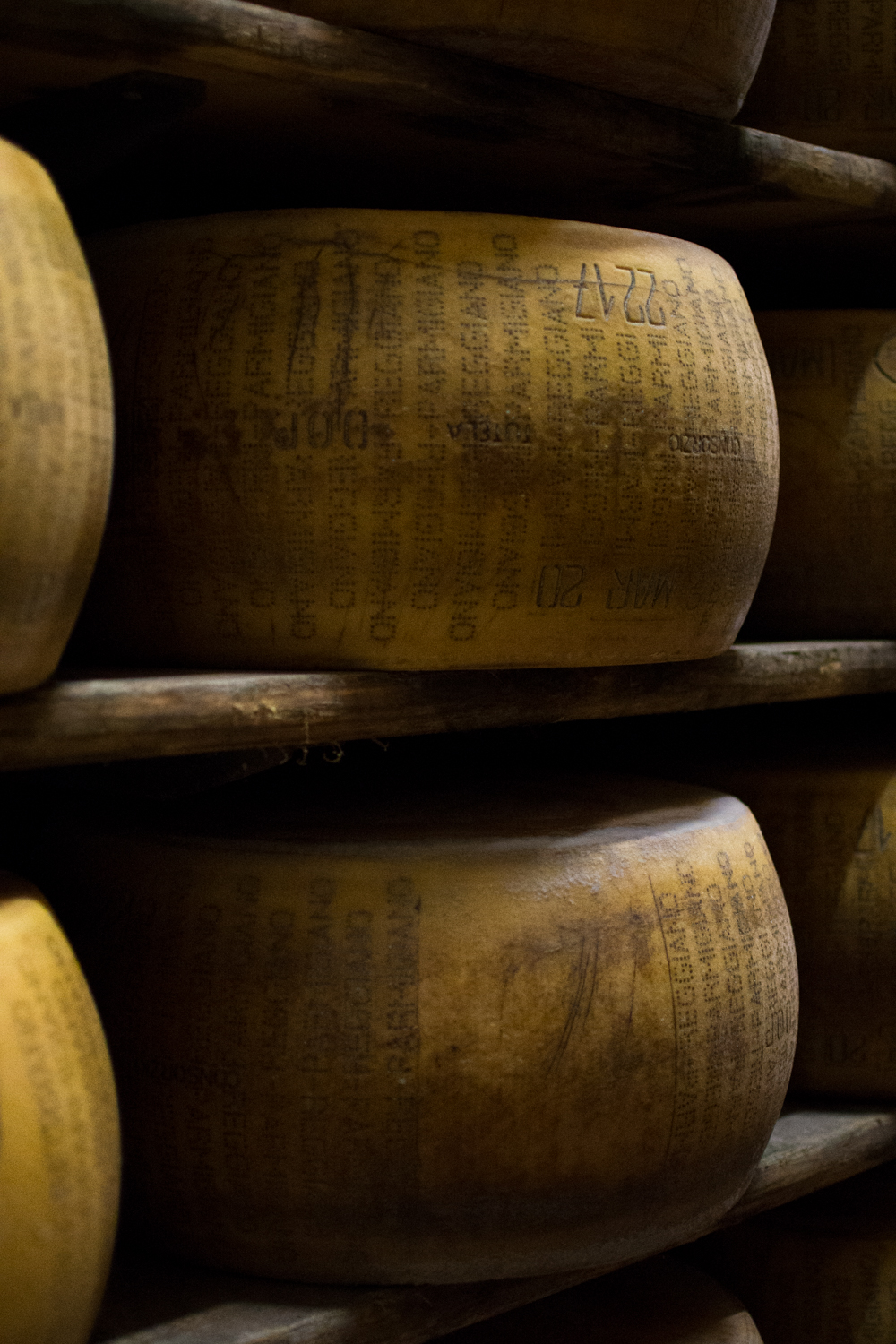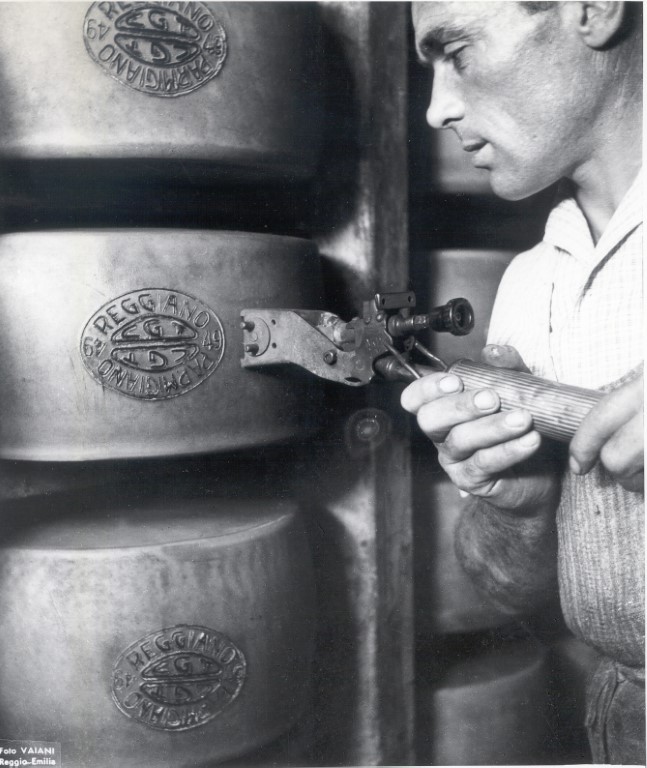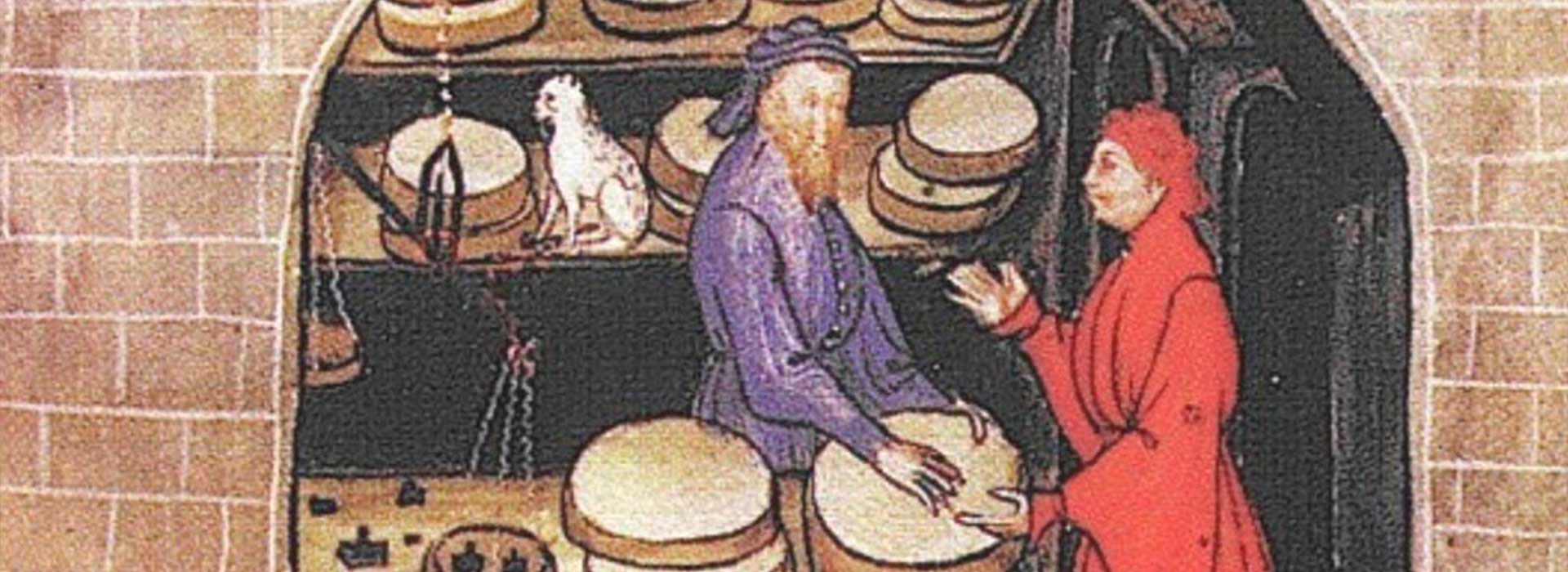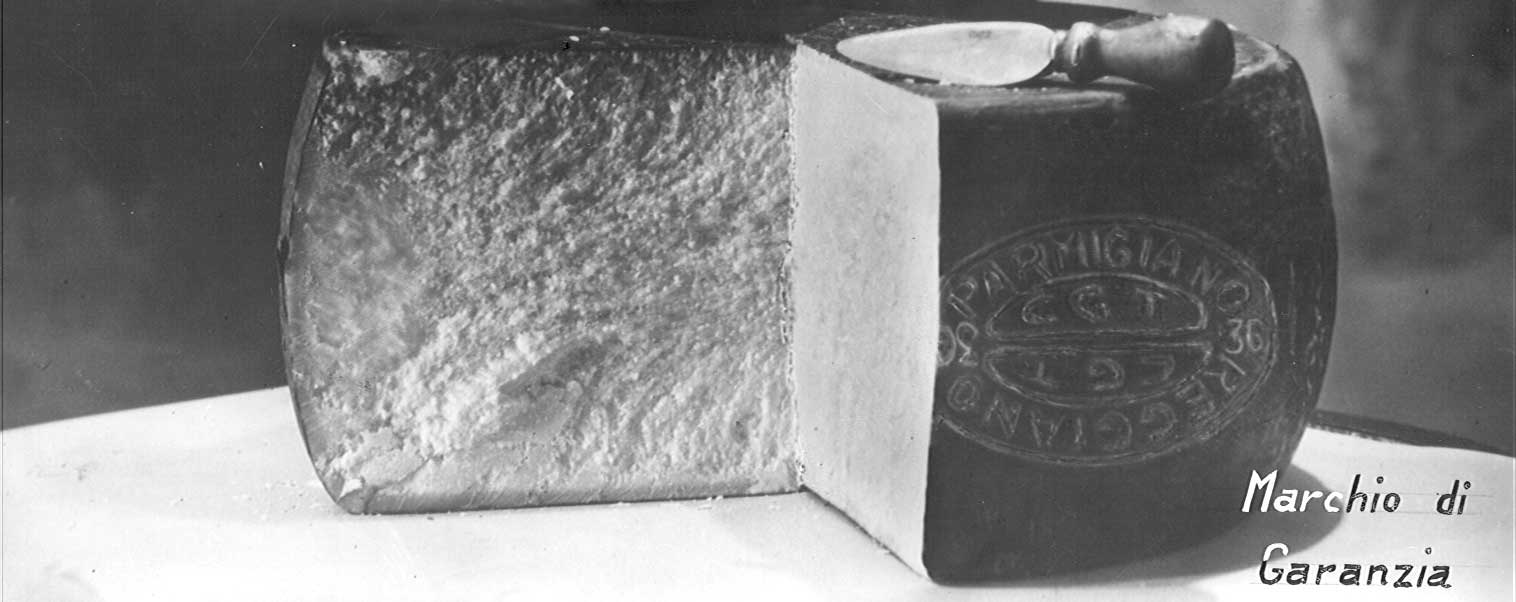The Benedictine and Cistercian monasteries in Parma area were the birthplace for Parmigiano Reggiano recipe, the first “long-life” hard cheese that could be sold over long distances. This is due to salt availability in Salsomaggiore and also because wheels (at the time smaller, between 16 and 20 kg) could be easily transported. Later, between the 14th and 16th centuries, quantities produced increased significantly, thanks to landowners and abbeys in this area.
The “vaccherie” were born, and with them the ‘turnario’, which represented the first example of a dairy. For the first time, an official document indicates the Denomination of Origin of Parmigiano Reggiano on August 7th, 1612.
A document drafted by the notary of Camera Ducale defines the area that could be called ‘di Parma’ “alle cassine delli infrascritti luoghi, cioè, del Cornocchio, di Fontevivo, di Madregolo, di Noceto et di simili luochi circonvicini alla medesima città di Parma.
“Parmigiano Reggiano origins date back to the late Middle Ages, around the 12th century, as a natural result to the need of using and preserving the large quantities of milk produced by cows used for both agricultural work and cheese production. ”.
In the 19th century, during the Napoleonic era, the lands belonging to the Holy Church passed to private individuals who greatly increased dairy activity in this area.
In the early 1900s, the production of Parmigiano Reggiano was definitively codified, becoming the product we know today, thanks also to the numerous innovations introduced into the production process, including the use of whey grafting.
Parmigiano Reggiano
today
Parmigiano Reggiano is a protected designation of origin cheese (PDO), produced in Parma, Modena and Reggio-Emilia provinces, as well as in some areas around Bologna and Mantua. It is a hard cheese, cooked and slowly matured – aged at least 12 months, rarely less than 15-18 months at consumption – produced with raw, semi-skimmed milk from cows whose diet consists mainly of fodder from the area of origin.
Milk used cannot be subjected to heat treatments and the use of additives is not allowed. Parmigiano Reggiano production is based on milk transformation using artisanal techniques which are the result of the empirical cheesemakers experience and come from centuries-old customs and traditions observance.
Thanks to these processes and to the long maturing phase, lactic flora enzymatic activities transforms milk (the only raw material of Parmigiano Reggiano) into a great complexity food, rich from an organoleptic and a nutritional point of view.


Parmigiano Reggiano is a “concentrate” food.
Milk nutritive components gradually lose their water, creating a nutritive principles high concentration, much higher than the original raw material; therefore this food has a high energy content: 395 Kcal per 100 grams of cheese.
Protein is the most important component at 33%, fat content at 28% average is in line with the semi-fat cheeses group to which it belongs; the residual 30% is water. It has a relatively low cholesterol content, less than 100 mg per 100 grams of cheese.



